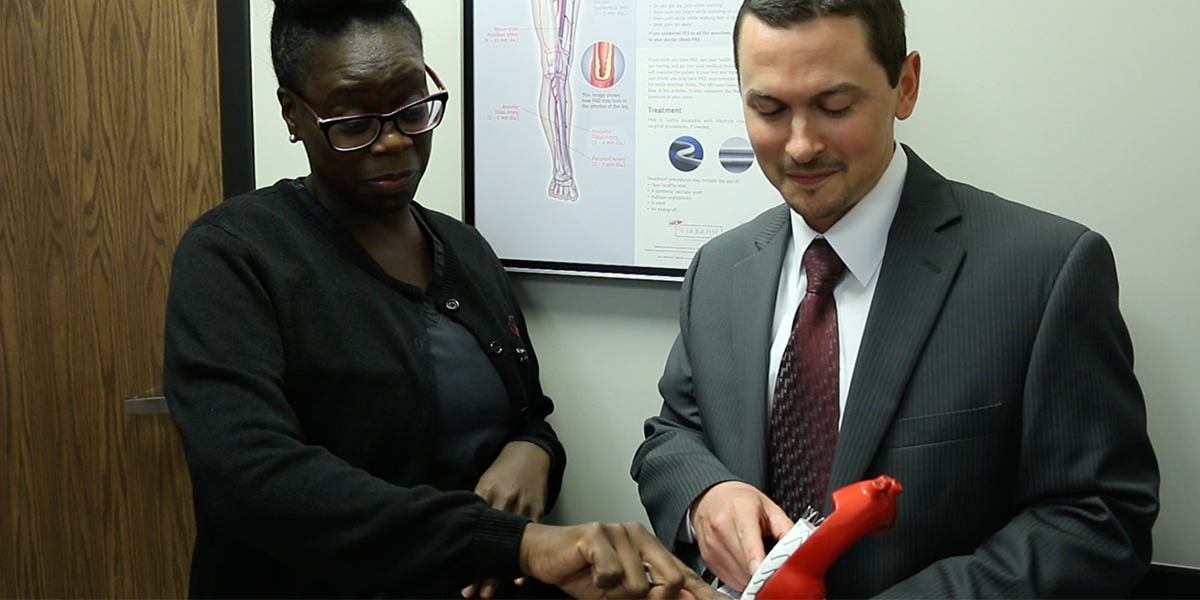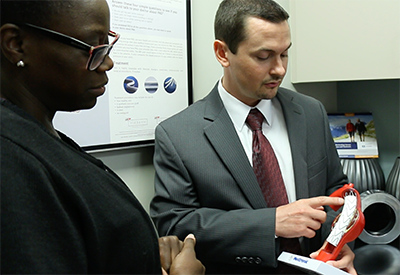 An estimated 31 million people in the US, or 10% of the adult population, suffer from kidney disease – making it one of the more common chronic conditions. For patients with chronic kidney disease, the treatment options are either kidney transplants or dialysis.
An estimated 31 million people in the US, or 10% of the adult population, suffer from kidney disease – making it one of the more common chronic conditions. For patients with chronic kidney disease, the treatment options are either kidney transplants or dialysis.
Dialysis artificially removes waste products and extra fluid from the blood using a tube when the kidneys are no longer able to. The treatment also helps to control blood pressure and to maintain a safe level of certain chemicals in the blood, including potassium, sodium and bicarbonate.
Diabetes is the leading cause of kidney failure, followed by high blood pressure. Other conditions leading to kidney disease and failure include certain autoimmune diseases, such as lupus or IgA nephropathy, and genetic diseases like polycystic kidney disease.
Waiting lists for donated organs are long, and the procedure is extremely invasive. For many patients, dialysis is the optimal choice. Dialysis becomes necessary once patients lose 85-90% of their kidney function and have a glomerular filtration rate of less than 15 and more than 468,000 dialysis patients in the US treated for kidney failure.
Richard R. Teed, M.D., a board certified vascular surgeon with Vascular Specialists of Central Florida, says many of the referrals he sees are for dialysis access. He explains that it’s important for patients to visit a vascular specialist to plan for when they’ll need dialysis before reaching a critical point to ensure maximum effectiveness and minimal disruption.
“Typically we like to see patients six months to a year before we anticipate them requiring the dialysis,” he explains.
As such, it is important for patients to monitor symptoms to identify any kidney-related conditions. Symptoms of kidney disease may include:
- A lower amount or urine than normal
- Swollen legs, ankles and feet from fluid retention due to failure to eliminate water waste
- Unexplained drowsiness and fatigue
- Persistent nausea
- Pain or pressure in the chest
What to Expect from Hemodialysis
 Hemodialysis treatment requires visiting an outpatient treatment center three times a week for three to four hours per appointment. Patients will also need to attend appointments before beginning dialysis to ensure their arteries and veins are prepared for the filtration process.
Hemodialysis treatment requires visiting an outpatient treatment center three times a week for three to four hours per appointment. Patients will also need to attend appointments before beginning dialysis to ensure their arteries and veins are prepared for the filtration process.
“There are a few ways patients can have their blood filtered for dialysis,” Dr. Teed says. “In an arteriovenous fistula operation we connect the patient’s vein to the artery by sewing them together. Dialysis can begin 90 days after that.”
Another option, he explains, is to use a graft, although he says it’s a bit riskier. “A graft is essentially a synthetic piece of material is sutured between an artery and a vein,” he explains. “While this procedure requires less time before dialysis begins, it comes with a higher risk of infection, and it doesn’t stay open as long as the fistula.”
Once the patient is ready for dialysis to start, the access area will be washed to prepare for the needles that will be inserted to allow the blood to flow in and out. Numbing cream can be administered to the area if the process is uncomfortable. During the first few sessions, it is common to experience nausea, cramping or headaches, but these side effects generally subside after a few visits.
Patients with kidney issues should visit a vascular specialist sooner rather than later if they anticipate needing dialysis now or in the future to ensure they are prepared for the process.
Understanding Hemodialysis Machines and Technology
Hemodialysis heavily relies on sophisticated machinery to replicate kidney function. Dialysis machines, the core component, filter blood by removing waste and excess fluid.
Advancements in technology have markedly improved these machines. Nephrology research highlights how the development of high-flux dialyzers, enhancing solute removal and biocompatibility, has led to better patient outcomes. Additionally, portable and home hemodialysis machines have gained traction, offering patients more flexibility and comfort.
Filters, especially high-efficiency ones, have reduced complications like clotting during treatment, enhancing efficacy. Monitoring devices, like remote monitoring systems, allow healthcare providers to track patients’ progress remotely, ensuring timely interventions and personalized care.
Eating Right: Tips for Nutrition with a Hemodialysis Diet
Diet plays a pivotal role in managing hemodialysis. A meta-analysis published in BMC Nephrology highlights that adherence to dietary restrictions significantly correlates with improved outcomes in hemodialysis patients.
- Nutritionists recommend a diet rich in high-quality proteins while controlling portion sizes to maintain nutritional balance.
- Restricting potassium, phosphorus, and sodium intake is crucial to prevent electrolyte imbalances and fluid overload.
- Fluid intake is closely monitored to prevent fluid overload, which could strain the heart and cause complications.
Managing Hemodialysis Side Effects
Common side effects of hemodialysis can be mitigated with proper management strategies. You should always talk to your doctor about what to expect.
- Anemia, prevalent in dialysis patients, is often managed with erythropoiesis-stimulating agents.
- Low blood pressure during or after sessions can be alleviated by adjusting fluid removal rates or dietary modifications.
- Infection risks are reduced through meticulous hygiene practices and ensuring sterile techniques during access procedures.
- Preemptive vaccinations can significantly decrease infection rates in dialysis patients.
Lifestyle Changes and Support for Dialysis Patients
 Undergoing hemodialysis does require lifestyle adjustments, and patients should always seek support from a doctor. Community resources, like support groups and counseling, also play a huge role in alleviating stress and improving patients’ coping mechanisms.
Undergoing hemodialysis does require lifestyle adjustments, and patients should always seek support from a doctor. Community resources, like support groups and counseling, also play a huge role in alleviating stress and improving patients’ coping mechanisms.
Flexibility in work schedules is beneficial, and some employers offer accommodations for dialysis patients. Travel considerations, including arranging treatments at destination locations or securing medical documentation, ensure seamless experiences for traveling patients.
Choosing the Right Dialysis: What are Your Options?
Comparing dialysis modalities reveals varying advantages and drawbacks. You should talk to your doctor about which dialysis will lead to the results. Here is a look at each option:
- Hemodialysis, conducted in clinics, offers thorough removal of waste products but requires frequent visits. This option has the highest success and less risk of infection.
- Peritoneal dialysis provides more autonomy, allowing treatments at home, but it demands strict adherence and carries infection risks.
- Home hemodialysis, while offering more frequent and longer sessions, requires specialized training and increased self-management.
Factors like patient lifestyle, medical conditions, and preferences influence the choice of dialysis modality, emphasizing the need for personalized decision-making.
Frequently Asked Questions About Hemodialysis
- How often is hemodialysis required?
Hemodialysis is typically done three times a week, with each session lasting around 3 to 4 hours. The frequency might vary based on individual needs and recommendations from healthcare providers.
- What happens during a hemodialysis session?
During hemodialysis, blood is removed from the body, filtered through a dialysis machine to remove waste and excess fluids, and then returned to the body. This process mimics the function of healthy kidneys.
- How long does it take to prepare for hemodialysis access?
Preparation for hemodialysis access, such as creating an arteriovenous fistula or graft, may take around 90 days for a fistula. However, individual cases might vary based on specific medical conditions and treatment plans.
- Are there dietary restrictions during hemodialysis?
Yes, patients undergoing hemodialysis often have dietary restrictions. This includes monitoring fluid intake, limiting certain nutrients like potassium, phosphorus, and sodium, and following a prescribed diet to manage these levels.
- What are common side effects of hemodialysis?
Common side effects may include nausea, cramping, headaches, low blood pressure, or anemia. However, these side effects often improve as the body adjusts to the dialysis process.
- Can a person on hemodialysis lead a normal life?
While hemodialysis requires regular treatments, many individuals lead fulfilling lives. Adherence to treatment, dietary recommendations, and lifestyle adjustments can contribute to a good quality of life.
- How long can a person stay on hemodialysis?
The duration on hemodialysis varies for each individual. Some may be on dialysis temporarily until a kidney transplant becomes available, while others may require it for a longer duration.
Next Steps with Hemodialysis & Treatment
At Vascular Specialists of Central Florida, we understand the challenges of hemodialysis and the importance of vascular health in this treatment. Our experienced team is here to offer tailored support, from preparing for dialysis access to ongoing care. Whether you’re considering hemodialysis or already in treatment, our personalized approach ensures the best care for your well-being. Contact us today to see how our expertise can make a difference in your hemodialysis experience
